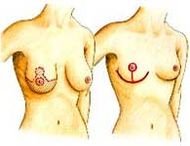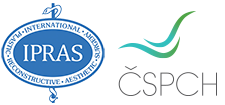What is mammaplasty

Pre-operation Instructions
- A consultation with a plastic surgeon is followed by internal pre-operation examination, and then a term for an operation can be agreed.
- Having paid an advance, the operation term becomes binding for both parties, the remaining part of the operation price shall be paid on the day of the operation.
- It is necessary to appear fasting to the operation (i .e do not drink, eat, smoke since midnight) , following complete hygienic measures including hair washing, without any make-up)!
- Any jewels including earrings should be left at home!
- After the operation, the patient will have to stay at the department until complete stabilization of the health condition. The patient is released to the treatment at home on the next morning after the operation.
- We recommend the patients to be accompanied and transported by car, in case of patients from other towns.
- An extended stay at our department can be agreed individually, as well as admitting to the department in the afternoon on the day prior to the operation in case of patients from other towns.
The Operation and Post-operation Term
The operation is made under total anaesthesia and it takes about 2 or 3 hours as required. Several procedures are available for the performance of such operation. It depends on the type of bosom and required extent of modelling. Almost always, scars stay around mamma area, in a vertical downward direction towards below breast fissure and complete length of the below breast fissure. The whole scar forms a shape of something like anchors on the breast.
On the next day following the operation, jelly bandage is replaced, drains are removed, and, provided the operation wound and complete condition are good, the patient can be released to home treatment. During the initial days after the operation, it is necessary to keep a rest regime without any physical load. On the 3rd or 4th day after the operation, the patient comes for the bandage to be replaced. At the 7th to 10th day after the operation, the patient comes for another bandage replacement and stitches removal. At the same time, her surgeon informs her about scar pressure massages. After such performance, the patient should wear elastic bra of a sport type. Other examinations are made individually.
After 7 up to 10 days without any complication, the patient can return to a normal regime. However, full physical load and sporting are only permitted after about 1 to 2 months from the respective operation depending on the healing and recovery.
After an interval of half a year, we recommend to initiate regular examinations in a mammologic centre, which should be a must especially for women older than 30 years.
In addition, we recommend an examination in our department, especially when during a short time period (days, weeks) a change in the bosom shape, constitution (hardening) or inflammatory manifestation at a breast or axilla, occurs.
The data presented is based on a common post-operation course. However, the recovery is an individual process depending not only on healing abilities of every individual body, but also on every patient´s conscientiousness.
The patient is expected to set such conditions for a period of several days after her operation to be able, in case of any subjective problems or complication, to come as soon as possible for examination to our department.
A positive operation result and mutual satisfaction is in your interest as well as in ours. Mutual trust and co-operation of the patient with the surgeon is a vital precondition.





